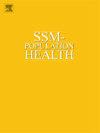Transit bus access to healthy, affordable food: A novel geographic information system (GIS) and community-informed analysis
IF 3.6
2区 医学
Q1 PUBLIC, ENVIRONMENTAL & OCCUPATIONAL HEALTH
引用次数: 0
Abstract
Good nutrition reduces the risk of chronic disease, but many vulnerable populations do not have equitable access to healthy food. People who are lower-income, non-White, older, or disabled, have increased likelihood of not owning a vehicle and of being dependent on public buses to source healthy, affordable food. Our study took place in three municipalities targeted by the Rhode Island Department of Health for equity-focused interventions. Our methodology aimed to overcome limitations of prior analyses of public transit food access. We determined healthy food sources, stratifying their affordability with market basket pricing data and community input. Using a geographic information system (GIS), we identified the transit bus service areas of the sources. Our novel approach included employing a fixed bus wait time, determining bus travel times based on schedule combined with historical data, and determining acceptable travel times through a community leader survey. We analyzed access by subgroups including those experiencing poverty, older adults, those without cars, and those with disabilities. We found that 45% of the population in the most urban municipality had bus access to discounted healthy food, and no one in the two less urban municipalities did. Bus access to six food pantries was limited to 15%–28% of the population. Our approach, combining spatial analysis informed by surveys and community input, can increase the ease and accuracy of analyzing bus access to healthy, affordable food and is replicable in other regions and extensible to other types of destinations and services and to rail transit.
公共汽车获得健康、负担得起的食物:一种新型地理信息系统(GIS)和社区知情分析。
良好的营养可以降低患慢性病的风险,但许多弱势群体无法公平获得健康食品。低收入、非白人、老年人或残疾人更有可能没有汽车,而是依赖公共汽车来获取健康、负担得起的食物。我们的研究是在罗德岛卫生部针对公平干预的三个城市进行的。我们的方法旨在克服先前公共交通食品获取分析的局限性。我们确定了健康食品来源,并根据市场篮子价格数据和社区投入对其可负担性进行了分层。利用地理信息系统(GIS),我们确定了公交服务区的来源。我们的新方法包括采用固定的公交车等待时间,根据时间表结合历史数据确定公交车行驶时间,并通过社区领导人调查确定可接受的行驶时间。我们分析了亚群体的访问情况,包括贫困人群、老年人、无车人群和残疾人。我们发现,在大多数城市中,45%的人口可以通过公共汽车获得打折的健康食品,而在两个城市较少的城市中,没有人这样做。只有15%-28%的人口可以乘坐公共汽车到达6个食品分发处。我们的方法结合了基于调查和社区投入的空间分析,可以提高分析公共汽车获取健康、负担得起的食物的便利性和准确性,并可在其他地区复制,扩展到其他类型的目的地和服务以及轨道交通。
本文章由计算机程序翻译,如有差异,请以英文原文为准。
求助全文
约1分钟内获得全文
求助全文
来源期刊

Ssm-Population Health
PUBLIC, ENVIRONMENTAL & OCCUPATIONAL HEALTH-
CiteScore
6.50
自引率
2.10%
发文量
298
审稿时长
101 days
期刊介绍:
SSM - Population Health. The new online only, open access, peer reviewed journal in all areas relating Social Science research to population health. SSM - Population Health shares the same Editors-in Chief and general approach to manuscripts as its sister journal, Social Science & Medicine. The journal takes a broad approach to the field especially welcoming interdisciplinary papers from across the Social Sciences and allied areas. SSM - Population Health offers an alternative outlet for work which might not be considered, or is classed as ''out of scope'' elsewhere, and prioritizes fast peer review and publication to the benefit of authors and readers. The journal welcomes all types of paper from traditional primary research articles, replication studies, short communications, methodological studies, instrument validation, opinion pieces, literature reviews, etc. SSM - Population Health also offers the opportunity to publish special issues or sections to reflect current interest and research in topical or developing areas. The journal fully supports authors wanting to present their research in an innovative fashion though the use of multimedia formats.
 求助内容:
求助内容: 应助结果提醒方式:
应助结果提醒方式:


